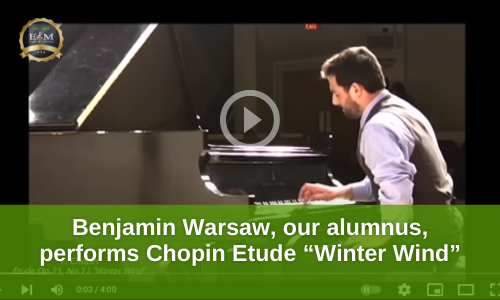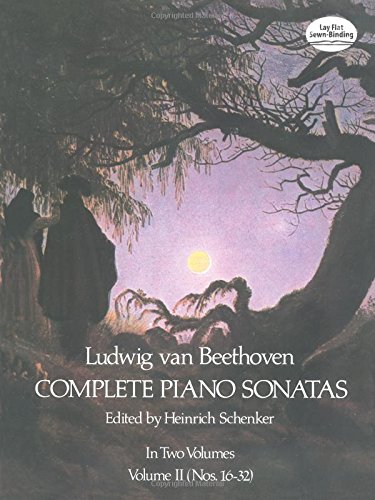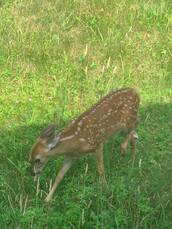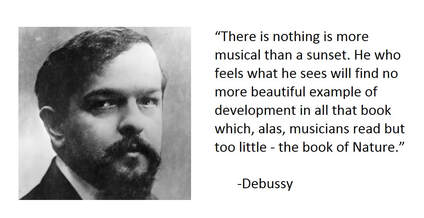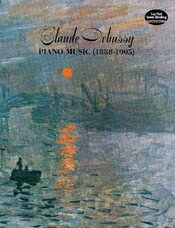Music & Nature
The European School of Music is a part of The Conservatoire, Inc., a nonprofit educational organization that offers unique learning opportunities and promotes preservation in the realms of both music and nature. Nature has always inspired composers in their creations, and the connection between music and nature is evident in countless musical compositions from classical to modern. We highlight this to our students, and with this focus, they feel more inspired to play. Because of the spiritual link between music and nature, we teach and encourage students to imagine nature scenes while they are listening to music or learning music pieces.
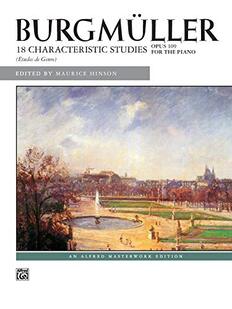
In contrast with many music teachers and schools, we use music pieces with a distinct and lovely musical appeal that focus on a specific technical issue (even for beginners), where we develop finger flexibility/activity while achieving relaxation of the student's body and arms. In addition, we often use music pieces related to nature to emphasize the connection between the two. Gradually, we introduce musical tasks like articulation, phrasing, and dynamics with a spectrum of shades. The goal is to teach students how to develop a beautiful instrumental tone and conveying the character of the piece to the audience.
Learning repertoire with nature-related themes that we often use includes: "Floating Clouds" by Samuel Maykapar," Awakening in the Forest", "Spring" and "L'Orage" by Friedrich Burgmuller, "A Day in the Jungle" by Jon George, "L'Avalanche" by Stephen Heller, and others. Tchaikovsky's "Childrens' Album" and Schumann's "Album for the Young" also contain a lot of pieces based on nature.
This repertoire helps students, both children and adults, to play music pieces with understanding and feeling, rather than playing mechanically like typing on a computer (something that is unfortunately all too common nowadays). Students can easily lose interest in learning music if they do not involve their imagination, creativity, and critical thinking in the learning process.
This is the foundation of our teaching philosophy. Everyone benefits, no matter whether you study music just for your joy, or to become a professional musician.
In the video below, our alumnus, Dr. Benjamin Warsaw – a concert pianist, composer, graduate of renowned Eastman School of Music, and professor of piano at Armstrong University – is conveying the scenery and sensations of a blizzard in his performance of Chopin's Etude "Winter Wind".
Learning repertoire with nature-related themes that we often use includes: "Floating Clouds" by Samuel Maykapar," Awakening in the Forest", "Spring" and "L'Orage" by Friedrich Burgmuller, "A Day in the Jungle" by Jon George, "L'Avalanche" by Stephen Heller, and others. Tchaikovsky's "Childrens' Album" and Schumann's "Album for the Young" also contain a lot of pieces based on nature.
This repertoire helps students, both children and adults, to play music pieces with understanding and feeling, rather than playing mechanically like typing on a computer (something that is unfortunately all too common nowadays). Students can easily lose interest in learning music if they do not involve their imagination, creativity, and critical thinking in the learning process.
This is the foundation of our teaching philosophy. Everyone benefits, no matter whether you study music just for your joy, or to become a professional musician.
In the video below, our alumnus, Dr. Benjamin Warsaw – a concert pianist, composer, graduate of renowned Eastman School of Music, and professor of piano at Armstrong University – is conveying the scenery and sensations of a blizzard in his performance of Chopin's Etude "Winter Wind".
|
Our own recital hall has a display of portraits of classical composers, beautiful nature paintings, and panoramic windows with mulberry trees visible in the background. All of this creates a special atmosphere for performers, inspiring them to do their best on the stage. Our students also have the opportunity to perform outside in nature settings like Chastain Park, where they can become one with music and nature. To enhance that feeling, the European School of Music is establishing a new, free Music & Nature Club. We will bring together students of all levels (ages 7 and up) to discuss their feelings about music and nature, share recent experiences with nature-themed music pieces, and even showcase their own compositions. At club gatherings, our instructors will also perform and discuss nature-themed music pieces. In the video below, our pan flute instructor imitates a skylark while performing at a recent ESM recital, and he is sharing this with ESM students to highlight the connection of music and nature.
|
|
Students who participate in our Music & Nature Club will also learn about the programs of the Southeast Nature Society, which feature educational information about Georgia waterfalls and the Southern Appalachian Mountains. Through the society's comprehensive database of Georgia's hundreds of waterfalls, our students and their families will discover a variety of one-day and overnight trips that will immerse them in nature and yield new inspiration for learning music. Nourishing your well-being by immersing yourself in the peacefulness of nature and music is an important part of the recipe for happiness!
The Southeast Nature Society was founded by our own music student, Mark Oleg, who had always been amazed by the connection between music and nature. In college, where he combined conservation biology and neuroscience, he is researching the influence of music and nature on the learning process and has uncovered their many benefits for studies. |
|
The influence of nature on genius composers, and the connection between music and nature, can easily be traced all the way back to 17th-century musical compositions from the Baroque era.
- "The Cuckoo" by Louis-Claude Daquin (France)
- "The Cuckoo and the Nightingale" by Frideric Handel (Germany)
- "The Four Seasons" by Antonio Vivaldi (Italy)
|
In his short essay, "Something Meaningful to Me", our voice student, Mark Oleg, has shared his thoughts on the influence of nature in Beethoven’s Moonlight Sonata as well as his thoughts on the connection of music with nature. And the need to understand how important it is to preserve both for generations to come...
. |
A captivation with nature is strikingly evident among the revolutionary masterpieces of Ludwig van Beethoven. Many of his 32 piano sonatas were inspired by nature, including two famous ones: the Moonlight and Tempest Sonatas. Beethoven’s "Pastoral Symphony" is entirely dedicated to nature, and the Shepherd Song from this symphony remains one of the most beloved tunes all across the globe.
|
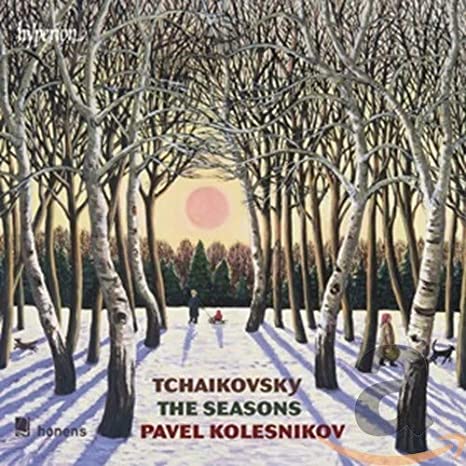
The genius creations of Beethoven inspired extraordinary Romantic-era composers throughout the world from countries including Germany, Norway, Finland, Poland, Hungary, and Russia. Many of them followed Beethoven's tradition of connecting nature to music. Folk melodies, often based on the beauty of nature, were intertwined in many musical masterpieces. Just to name a few:
- Robert Schumann’s piano suite “Papillons (Butterflies)”
- Franz Schubert’s "The Linden Tree", "The Swan Song", and "The Trout”
- Edvard Grieg’s symphonic suite “Peer Gynt” (including “Morning” and “Hall of Mountain King”) as well as "Spring Dance" and "Raven's Wedding"
- Frederic Chopin’s “Raindrop Prelude” and “Winter Wind Etude”
- Nikolai Rimksiy-Korsakov’s “Flight of the Bumblebee”
- Modest Mussorgsky’s “Pictures from the Exhibition”
- Sergei Rachmaninoff’s "The Island" and “Spring Waters”
- Tchaikovsky's "Swan Lake" and "The Seasons"
Tchaikovsky's "The Seasons" album describes the seasonal shifts of nature throughout all twelve months. Our students' favorites are "March - Song of the Lark, "April - Snowdrop", "May - White Nights", "June - Barcarolle", and "October - Autumn Song".
At the end of the 19th century, French composer Camille Saint-Saëns published his humorous symphonic suite "The Carnival of the Animals". Its popularity led it to be transcribed for piano in different difficulty levels, so students of any age can enjoy learning it. Another famous French composer, the impressionist Claude Debussy, based much of his work on nature too, which he highlighted in a unique way. Debussy’s symphonic composition, "Afternoon of a Faun (Fawn)", and his piano pieces, “La Mer (the Sea)”, “Nuages (Clouds)”, and especially “Claire de Lune” capture the imagination of any performer and lead to a feeling of becoming one with nature.
This tradition continued among 20th-century modern Russian composers like Sergei Prokofiev, Dmitri Shostakovich and American composer George Gershwin, the latter of whom showcased the beauty of summer in "Summertime", composed for the opera Porgy and Bess. The theme of nature continued to be highly prevalent among famous American music theater compositions like Wizard of Oz and Sound of Music, which is set in the European Alps and is beloved by nature enthusiasts. Our voice teachers often pick songs from these, like Edelweiss or Over the Rainbow, which students are enthusiastic to learn.
There is another genre where the nature theme is common. The waltz - there are a variety of waltzes with nature titles. Among the best-known are the waltzes of Austrian composer Johann Straus, such as the Blue Danube and Roses of the South. In our days composers are still inspired by nature. Here is a very interesting modern work, "Waltz of the Butterflies".
|
|
|
